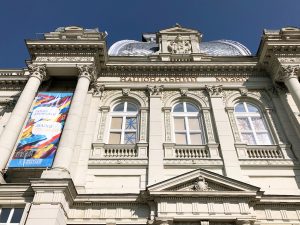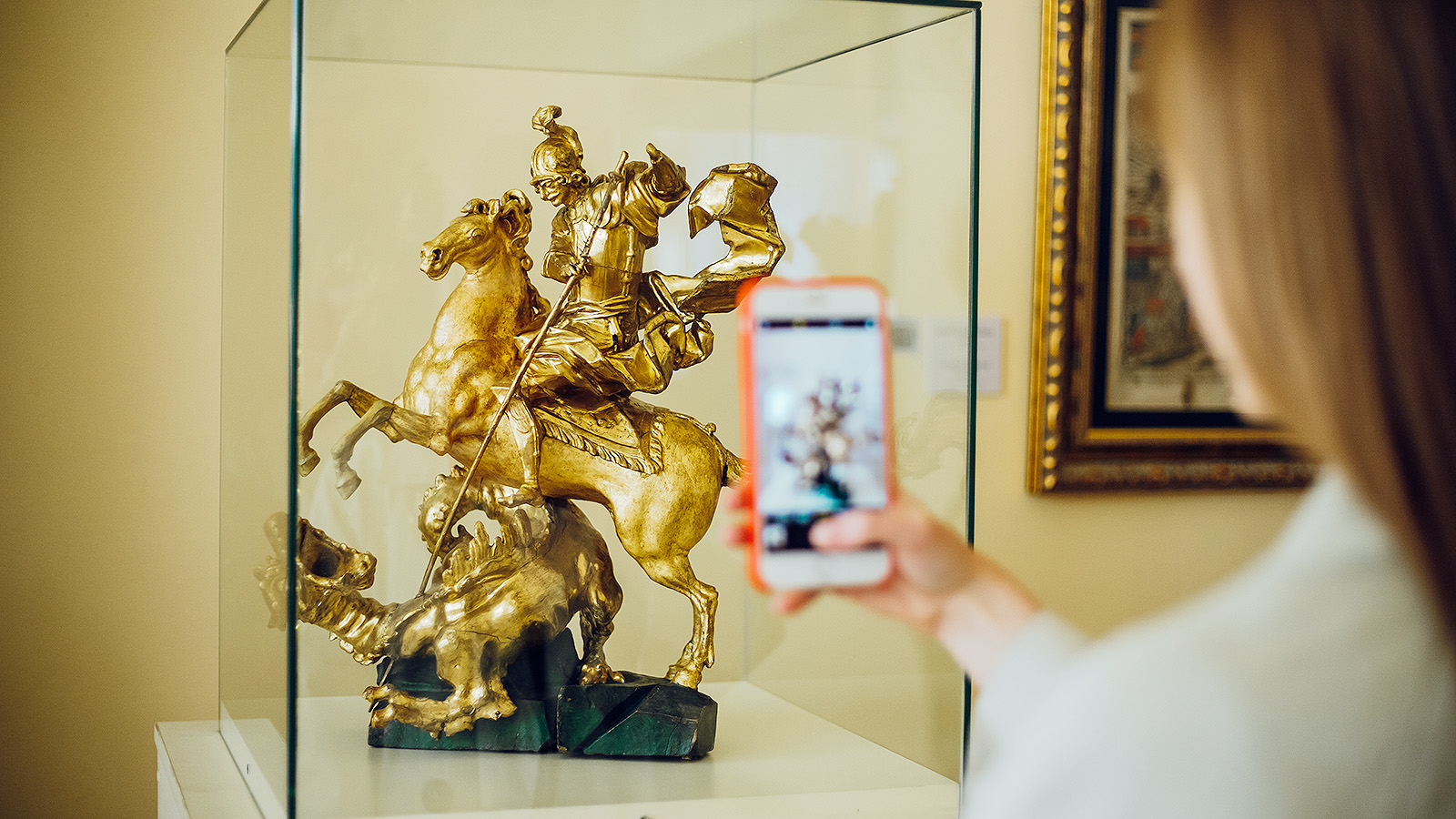For good reason has the Andrey Sheptytsky National Museum in Lviv, Ukraine, endured for more than a century. Though founded as a repository for ecclesiastical art in 1905, the one-time “Church Museum” has, in time, flourished into the country’s foremost cultural treasuries. It currently houses more than 175,000 objects encompassing Ukraine and world art history — from Ukrainian folk engravings of the 18th century to Italian paintings of the 17th century.
Not all of these works, though, have entered the museum’s permanent collection, much less been displayed. Further, the ongoing Russian invasion has endangered the conservation of these objects, while deepening their significance to Ukraine’s cultural heritage. In response, the National Museum in Lviv has tapped NFT marketplace V-Art to virtually platform a number of its lesser-seen works — a first for the cultural institution.
What’s happening

In partnership with V-Art, dslcollection, and Breezy, the National Museum in Lviv will present its first NFT collection, featuring digital editions of physical works by 24 European and Ukrainian artists. Image: V-Art
On October 27, the National Museum in Lviv will debut on the blockchain with its NFT collection, titled Alternative Dimensions. The project is presenting digital editions of physical works by 24 notable European and Ukrainian artists, all of which have never before been displayed within the museum. According to the institution, these pieces have been selected from over 40,000 paintings and have played key roles “in the creation of modern culture and art.”
The NFTs will be available for purchase on the V-Art platform, with some of the proceeds directed toward the National Museum’s security and conservation systems. Part of the funds will also support the restoration of the Chernihiv Regional Art Museum and the Kharkiv Art Museum, both of which have been gravely damaged by Russian hostilities.
Accompanying the collection is a virtual exhibition, to be unveiled on V-Art, overseen by crypto art curator Eleonora Brizi (aka Breezy). The show will see international artists reimagine works in the National Museum’s collection, with both classic and contemporary pieces exhibited in tandem. V-Art will also be hosting a range of online talks and activities in concert with the launch.
Why it matters

Since Russia commenced its attack on Ukraine, the National Museum of Lviv has stored away its holdings to guard against possible attacks. Image: National Museum in Lviv during the full-scale war
That Ukraine’s cultural sites and institutions are at risk of destruction (or are already devastated) by Russian forces has been an acute and growing concern. The National Museum in Lviv itself has stored away its holdings, leaving its walls bare, to guard against possible Russian attacks. “Even during the war, we are taking initiative, protecting our heritage, preparing exhibitions and collections, in order to save the most important things that are the foundation of our present and the hope of our future,” said Mariya Tsymbalista, Head of the Graphics Department at the museum.
And Alternative Dimensions is one such way to preserve these artworks and artifacts, ensuring their endurance in the virtual realm and accessibility across borders. Similar ventures from Backup Ukraine to Meta History have likewise deployed technological solutions as a stand against Russian aggression that, as Meta History’s Founder VK told us, is “intended to leave us without a past.”
Which makes the NFT collection’s cause — the conservation and restoration of Ukraine’s cultural heritage — all the more worthy and urgent. Ukraine has already effectively leveraged the blockchain to fundraise for its war and aid efforts, and certainly, cultural preservation, for a country whose history is both rich and long, should be as much an imperative.
What they said
“Today, more and more innovation is coming to the world of art and museums. Exhibits can ‘travel’ virtually from a museum collection into a larger world via NFTs. This brings the chance to raise funds that feed back into the existence of the institution: its development, the digitization of its collections, awareness of the value of the works we hold — as well as the opportunity to help Ukrainian museums that were damaged during this full-scale war.” — Ihor Kozhan, General Director, National Museum in Lviv
“Freed and safe, these artworks from different eras appear for the first time in a common space, a digital gallery. In this context of co-location, they acquire both the experience of interacting with each other, with the audience, and with contemporary artists.” — Olexii Havryliuk, V-Art Representative and Co-Curator of Alternative Dimensions



